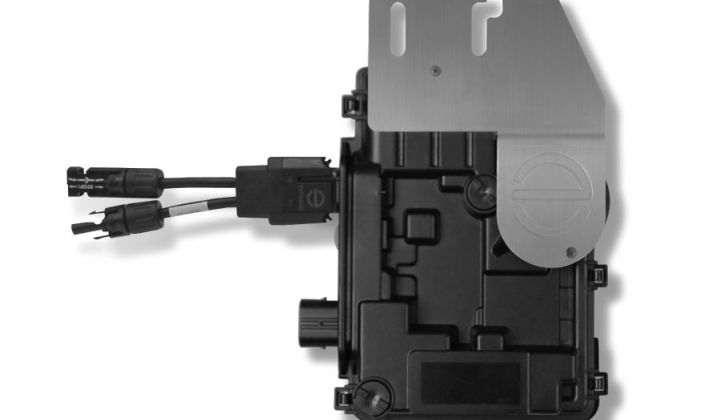Last Friday, the day before Christmas Eve, microinverter pioneer Enphase filed for a $17 million equity offering. This was not an unexpected event and completes a previously announced $35 million shelf offering.
According to an SEC document, Enphase "entered into an At Market Issuance Sales Agreement with FBR Capital Markets & Co" as sales agent to sell shares of common stock "having an aggregate offering price of up to $17,000,000."
Enphase is selling more stock and potentially driving its share price down through a significant dilution of its stock. It's one of the limited, mostly painful, moves a company in Enphase's difficult position can make.
[Dec 29 -- an Enphase representative notes, "The 8k only enables Enphase to raise capital in the future, and only if and when the company chooses to do so. The ATM is there to define the terms under which any future stock issuances might be made, signaling that if or when Enphase issues shares against the Shelf, the shares will be issued At The Money.]
Here are the takeaways from Enphase's most recent quarterly financial results -- results that have backed the company into this corner.
The good
-
Enphase reported total quarterly revenue of $88.7 million, up 12 percent compared to the previous quarter
-
Gross margins held relatively steady at 18 percent, as did revenue-per-watt at $0.43 per watt (AC) -- although both are down year-over-year
-
Q4 guidance implies modest growth by revenue and megawatts
The bad
-
GAAP net loss for the third quarter of 2016 was $18.8 million
-
The company announced a "restructuring," along with an 11 percent reduction in its 500-employee workforce in the hopes of saving $20 million in annual operating expenses
-
Earlier this year, Enphase entered into a $25 million loan agreement with a lender specializing in "rescue financing"
And the ugly
-
GAAP gross margin for the third quarter of 2016 was 17.9 percent
-
The company exited the third quarter with a total cash balance of $24.1 million
-
Enphase is confronted by a cooling residential solar market
- GAAP net loss for the third quarter of 2016 was $18.8 million
- The company announced a "restructuring," along with an 11 percent reduction in its 500-employee workforce in the hopes of saving $20 million in annual operating expenses
- Earlier this year, Enphase entered into a $25 million loan agreement with a lender specializing in "rescue financing"
And the ugly
-
GAAP gross margin for the third quarter of 2016 was 17.9 percent
-
The company exited the third quarter with a total cash balance of $24.1 million
-
Enphase is confronted by a cooling residential solar market
Enphase just sold the recently acquired O&M business of Next Phase Solar for an undisclosed amount. Enphase is also putting an enormous amount of faith in the rapid growth of the Australian energy storage market.
Enphase finishes 2016 faced with a ticking clock that requires the company to hit profitability while ramping two new product lines (its AC battery and sixth-generation microinverter) and keeping its inventory down while managing its working capital.
It's a precarious position for one of solar's early success stories. Enphase was a well-managed, VC-funded startup that created a new market, grew exceedingly fast and made it through the IPO window.
But, as we've reported, these are strange times in the clean energy world, when the nation's biggest solar installers are performing poorly in the stock market. In the words of GTM's Julian Spector, "Unprecedented deployments coincide with a slowdown in the growth of residential solar even as prices continue to fall, and the big players in the industry are scrambling to cut their costs in order to keep up."
SolarEdge, the leader in the module-level electronics market, has a far better cash position than Enphase and has been more responsive in adapting to the the commodity electron nature of this business.
The competitors for Enphase and SolarEdge are now the incumbent string inverter heavyweights, like ABB, SMA and Fronius. But, as Spector reports, "a big shadow on the horizon is Chinese conglomerate Huawei, which is launching a DC optimizer product next year."
Although 2017 is going to be a mostly flat year for solar industry revenue, it will still be a year where market leadership in modules, inverters and balance-of-system technology remains highly competitive and volatile.



